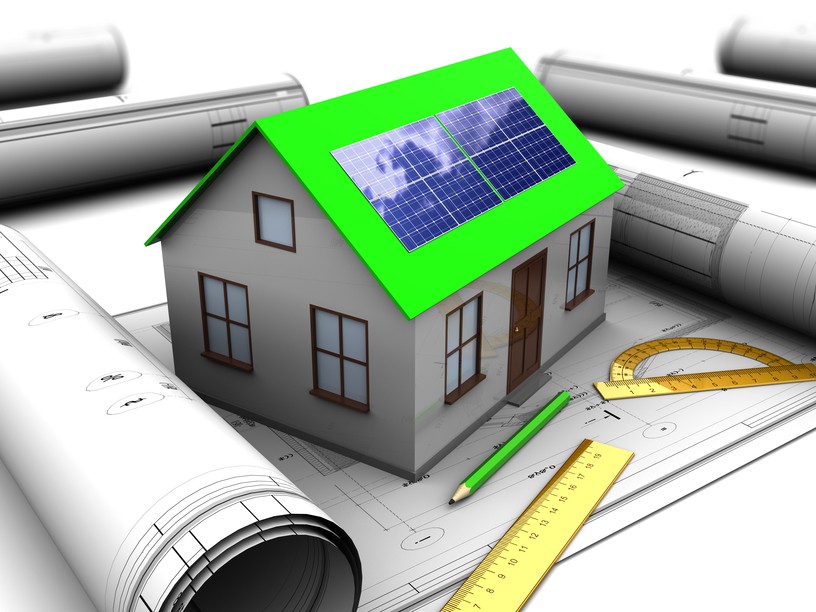Should You Invest In A Green Home
Post on: 20 Июнь, 2015 No Comment

Going green is getting a lot of attention. International climate change talks, hybrid cars and concern about the environment have caught the attention of home builders and homebuyers alike. For buyers, its not a lack of desire but a lack of availability and a lack of return on investment that make going green such a big challenge. Let’s examine a few of these issues, including the definition of green, and the cost and time to breakeven.
Green building is a great idea, but in terms of residential construction, it’s still in its infancy. Sure, high-efficiency windows and low-flow water fixtures are becoming standard features, but large-scale green building is not yet commonplace nationwide. In fact, many consumers are still unclear on the definition of green. So what does it mean to be green? (For more, see What Are Green Investments? )
Energy neutral housing is the ultimate objective. Since, according to the U.S. Department of Energy, buildings use 40% of the energy produced in the United States, moving that number to zero would have a huge impact on the nation’s energy consumption. Such homes are often referred to as energy neutral because they produce as much energy as they consume. Builders which produce net zero homes can charge up to a 10-15% premium over similar properties constructed with traditional methodologies. With tax incentives and rebates, the majority of these energy neutral properties expect to breakeven for their owners about in 12 years.
Aside from the occasional project, it’s hard to find an energy neutral home. A few states have witnessed the construction of a small number of homes, but even powerhouse conglomerate General Electric doesn’t envision an energy neutral home before 2015. (Learn more in The Green Marketing Machine .)
Energy Efficiency Standards: LEED Certified
How can you tell if your house is green? A common standard for energy efficient homes is the LEED certification, which refers to the Leadership in Energy and Environmental Design (LEED) Green Building Rating System, developed by the U.S. Green Building Council. They use 30% less water and 15%-20% less energy than similar, non-certified homes.
Exact figures are difficult to pin down, but various sources claim that LEED certified homes save homeowners about $70 per month through lower utility bills. Cost estimates suggest that LEED certified homes can usually be built for 2%-5% more than the average home. On a $300,000 home, that could be a $15,000 cost differential to meet the lowest of the four LEED certification levels. If you have a mortgage and pay interest on it, that number will be even higher. It takes a lot of months at $70 per month in savings to break even, and that’s if you can find a builder willing and able to build the home within the projected budget. According to the Green Building Council, there were fewer than 150 LEED Platinum (the highest rating) homes in the entire country as of 2009.
The American National Standards Institute also offers a standard for green construction. They tout the ICC-700-2008 National Green Building Standard as the first green building rating system to be approved by ANSI, making it the benchmark for green homes. Like LEED, the rating system includes four levels (bronze, silver, gold and emerald). They address issues such as lot design, energy efficiency and air quality. Even the top-rated emerald designation only signifies energy savings of 60% or higher. Again, finding a home that meets these standards is easier said than done.
The practical realities of today’s marketplace do make it possible for many would-be homeowners to find a home that is at least partially green. Geothermal heat, solar panels and even rainwater capture systems are readily available in some parts of the country. In areas where these features are common, the cost differential between traditional and more efficient homes is often minimal. (For more, read For Companies, Green Is The New Black .)
Retrofit Existing Home
If you can’t find a new home that meets the green standard you are seeking, retrofitting an existing home is another option. While it is cost prohibitive to take a traditional home and turn it into an energy neutral property, you can take reasonable steps to reduce energy consumption.

The installation of better insulation, efficient windows and water fixtures, native landscaping instead of turf and a programmable thermostat can help you improve reduce energy use and save money. Most of these steps pay for themselves in just a few years. GreenandSave.com estimates that new energy efficient windows cost about $700 more than other windows and pay for themselves in about 2.3 years through energy savings. Insulating your basement walls is estimate to cost $750 and to pay for itself in two and a half years. Sealing up air leaks can cost around $554 and pays for itself in just 3.1 years. All of these steps are good for your wallet and good for the environment. (To learn more, see Top 10 Green Industries .)
Should You Go Green?
Going green is a great idea — it just may not always be a great investment if you are looking simply in terms of dollars and cents. Building an energy efficient home in an area when none exist is going to be expensive. It is also likely to be frustrating, as you will not only struggle to find a builder that can do the job, but your home is likely to serve as a practice project for a crew that is not familiar with green building techniques.
Building a green home in an area of existing green homes is likely to come with a cost that is at least slightly (and possibly significantly) above the going rate for similar homes. If you don’t plan to stay long enough to recoup your costs, you are unlikely to save any money.
Retrofitting your existing home is likely to be a losing proposition if your goal is energy neutrality. On the other hand, you can enjoy a relatively quick return on your investment if you invest in easier to accomplish upgrades.
In every case, if your area offers the technology, and reasonable prices or tax breaks that make it a better deal, going green is the way to go. Of course like any investment, you need to research the topic thoroughly before putting your money at risk. (For more, check out our Investopedia Special Feature: Green Investing .)














